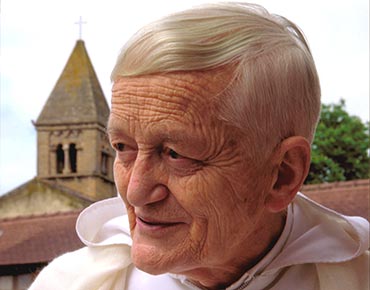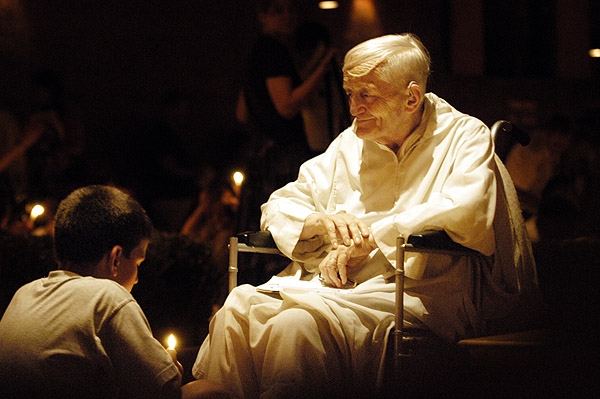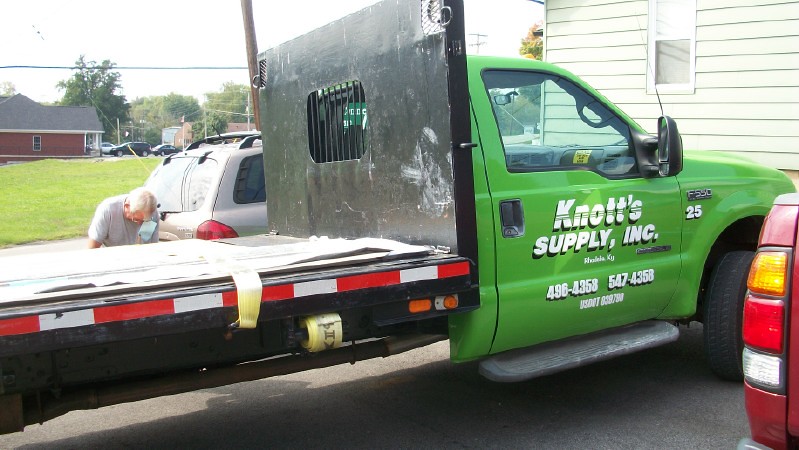BECAUSE I TOOK A RISK

I grew this beard at Taize on my first trip. I shaved it down to a Van Dyke style beard on the 25th anniversary of my ordination in 1995. I shaved it all off when I retired.
IN THE 1970s, I HAD FIVE CHANCES TO MEET "THE WHOLE WORLD" IN ONE CAMPGROUND IN THE BEAUTIFUL BURGUNDY WINE COUNTRY OF FRANCE TWO MILES FROM THE RUINS OF THE HISTORIC MONASTERY OF CLUNY.

I grew this beard at Taize on my first trip. I shaved it down to a Van Dyke style beard on the 25th anniversary of my ordination in 1995. I shaved it all off when I retired.
IN THE 1970s, I HAD FIVE CHANCES TO MEET "THE WHOLE WORLD" IN ONE CAMPGROUND IN THE BEAUTIFUL BURGUNDY WINE COUNTRY OF FRANCE TWO MILES FROM THE RUINS OF THE HISTORIC MONASTERY OF CLUNY.
I was fortunate enough to have made five trips to Taize with young adults, mostly non-Catholic, from Somerset, Kentucky, when I was assigned to St. Mildred Church. During those years, I volunteered to work at Somerset Community College as a volunteer ecumenical campus minister. I thought a trip to Taize, being an ecumenical monastery that welcomed young people from all over the world, would be something Catholic and non-Catholic students could share.
All I knew about Taize was from a four or five line clipping from the newspaper. On my first trip, I landed in Paris with five young adults in backpacks on Bastille Day (France's biggest holiday) without reservations, without a map of the city and without local currency. We sat in a city park for several hours totally overwhelmed. Looking back, I don't know how we made it for a month camping in France, Spain, Switzerland, Italy, Germany, The Netherlands, Belgium and Luxembourg. I lost 18 pounds on my first trip. The stop at Taize was our primary goal. We stayed there for a week on each trip in a retreat like setting.
The Taizé Community is an ecumenical monastic order in Taizé, Saône-et-Loire, Burgundy, France. It is composed of more than one hundred brothers, from Catholic and Protestant traditions, who originate from about thirty countries across the world. It was founded in 1940 by Brother Roger Schütz, a Reformed Protestant. Guidelines for the community’s life are contained in The Rule of Taizé written by Brother Roger and first published in French in 1954.
The community has become one of the world's most important sites of Christian pilgrimage. Over 100,000 young people from around the world make pilgrimages to Taizé each year for prayer, Bible study, sharing, and communal work. Through the community's ecumenical outlook, they are encouraged to live in the spirit of kindness, simplicity and reconciliation.
EARLY YEARS
The Taizé Community was founded by Brother Roger in 1940. He pondered what it really meant to live a life according to the Scriptures and began a quest for a different expression of the Christian life. A year after this decision, Schütz reflected:
Because his native Switzerland was neutral and thus less affected by the war, Schütz felt as if France would be ideal for his vision, seeing it as a “land of poverty, a land of wartime suffering, but a land of inner freedom.” He eventually settled in Taizé, which was a small desolate village just north of Cluny, the site of a historically influential Christian monastic foundation.
In September 1940, Schütz purchased a small house that would eventually become the home of the Taizé Community. Only miles south of the demarcation line that separated Vichy France and the Zone occupée, Brother Roger’s home became a sanctuary to countless war refugees seeking shelter. On November 11, 1942, the Gestapo occupied Roger’s house while he was in Switzerland collecting funds to aid in his refuge ministry. Roger was not able to return to his home in Taizé until the autumn of 1944, when France was liberated.
In 1941, Brother Roger had published a few small brochures outlining several facets of a Christ-centred communal life together. These brochures prompted two young men to apply, soon followed by a third. They all lived in Switzerland in a flat owned by Roger’s family until after the war when they began a new life together in the French countryside. Over the next few years several other men would join the community. On Easter Sunday 1949, seven brothers committed themselves to a life following Christ in simplicity, celibacy and community.
Growth and current situation
In the years that followed, others joined. In 1969, a young Belgian doctor became the first Catholic to pledge his life to the Taizé Community. More brothers from Reformed, Anglican and Catholic backgrounds joined the community. Soon the Brothers of Taizé were making trips to take aid to people in both rural and urban areas. They began forming “fraternities” of brothers in other cities that sought to be “signs of the presence of Christ among men, and bearers of joy”. Since 1951, the brothers have lived, for longer or shorter periods, in small fraternities among the poor in India (chiefly in Calcutta), Bangladesh, the Philippines, Algeria, Brazil, Kenya, Senegal, and the United States (chiefly in the Hell’s Kitchen section of Manhattan, New York City).
In August 2005 Brother Roger, aged 90, was killed in a knife attack by a mentally ill woman. At his funeral, Brother Roger had an ecumenical dream fulfilled. The presider at his funeral was the president of the Vatican's council for the unity of Christians, CardinalWalter Kasper. Anglican bishop Nigel McCulloch of Manchester, England, who represented Rowan Williams, the Archbishop of Canterbury, read the first reading in English. The second reading was read in French by the Rev. Jean-Arnold de Clermont, president of the Conference of European Churches, and in German by Bishop Wolfgang Huber, head of the Evangelical Church in Germany. Cardinals and archbishops, Orthodox, Anglican and other religious leaders and international politicians joined ordinary Christians in prayer during the funeral, including the President of Germany, Horst Köhler, and the retired Archbishop of Paris, Jean-Marie Lustiger. His funeral was attended by approximately 10,000 people.
Brother Roger Schutz founded the Taize Community in 1940.

The tiny village of Taize is doubled by tents and buildings serving the youth who visit.

The tiny village of Taize is perched on a hill overlooking some of the vineyards of Burgundy.
This is what I first saw when I arrived by bus in 1971.
This is the Catholic parish church of Taize. The monastic church is the Church of the Reconciliation.
This is the reception area for the hundreds of youth who come to Taize, especially during the summer. In the years I was there, there were over 3,500 youth from 70 countries arriving every week.

There are no seats in the Church of the Reconciliation. Both monks and visiting youth sit on the floor.
The monks sit in the middle of the crowd on the floor.
Brother Roger in his senior years.

That is me as a newly ordained priest in one of the English speaking discussion and prayer groups. I grew my first full beard in 1971 and kept it till 1995 when I saved in down to a Van Dyke.

This is a common sight as the visiting youth are getting ready for church or for meals.
This is Pol and Anne Coppin from Belgium. They were dating at the time. They since married and had three boys. We have stayed in touch ever since. They have visited me here in the US several times. I have visited them in Rome and Belgium. Forty to forty-five years later, I am still in contact with a few people I met during those trips.

This is a typical evening in one of the campgrounds.

These are a couple of members of my discussion/prayer group visiting my tent. - from England and Italy, I believe.

A few of our Somerset, Kentucky, group outside my poor pathetic tent.
 |
This was another one of my discussion/prayer groups. We were assigned to groups and the group strayed together for the entire week. We discussed, prayed, sang and ate together.

This looks so familiar!
In August 2005 Brother Roger, founder of the community of monks, aged 90, was killed in the church by a mentally ill woman. She came up behind him during prayer time and attacked him with a knife. Below are photos of his wake and funeral. I met him at least twice. I also met the famous Vatican II theologian, Yves Congar, on one of my trips to Taize. It was near the end of his life. He was visiting in a wheel chair. (See very bottom photo).

Frere Roger (Brother Roger) is buried in a simple grave near the monastery he founded.

Father Yves Congar, OP was made a Cardinal in 1994 towards the end of his life by Pope John Paul II.



























